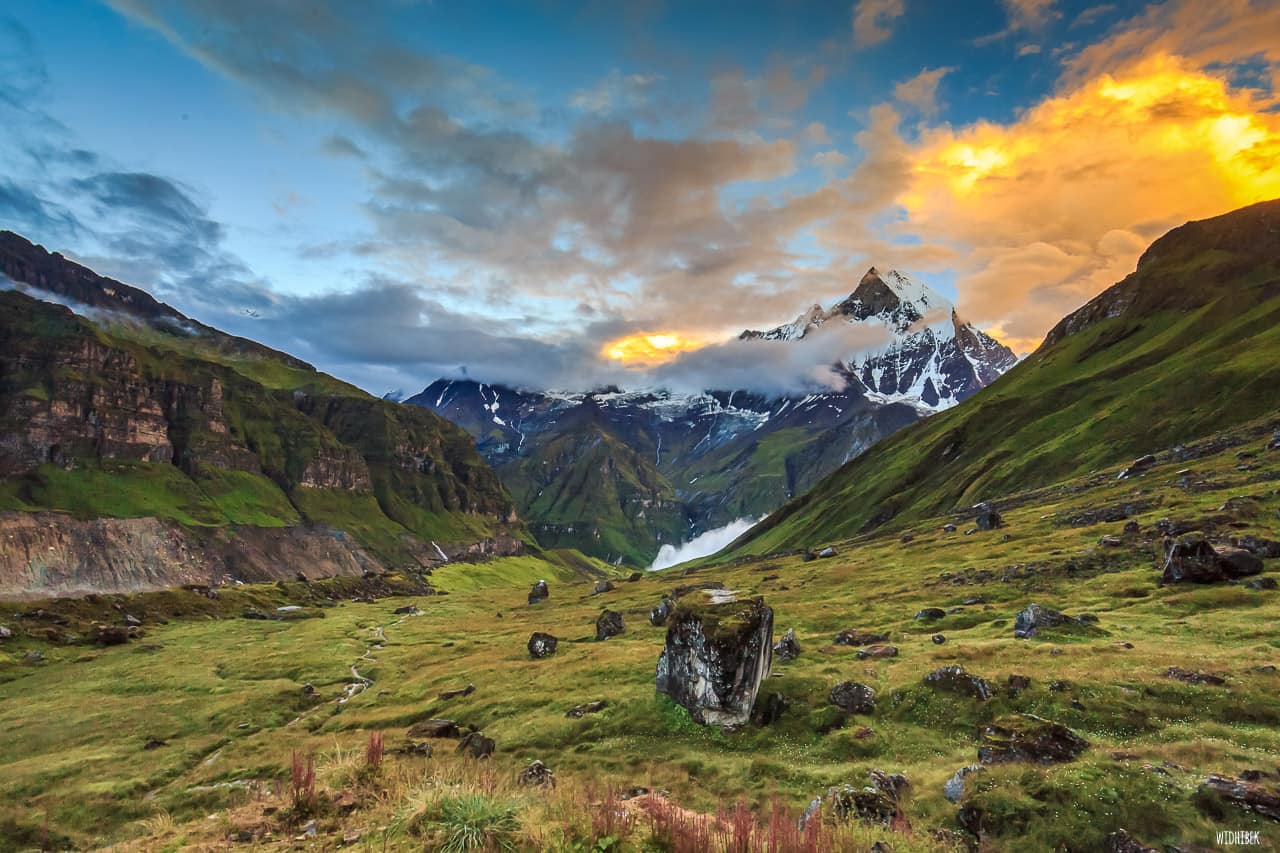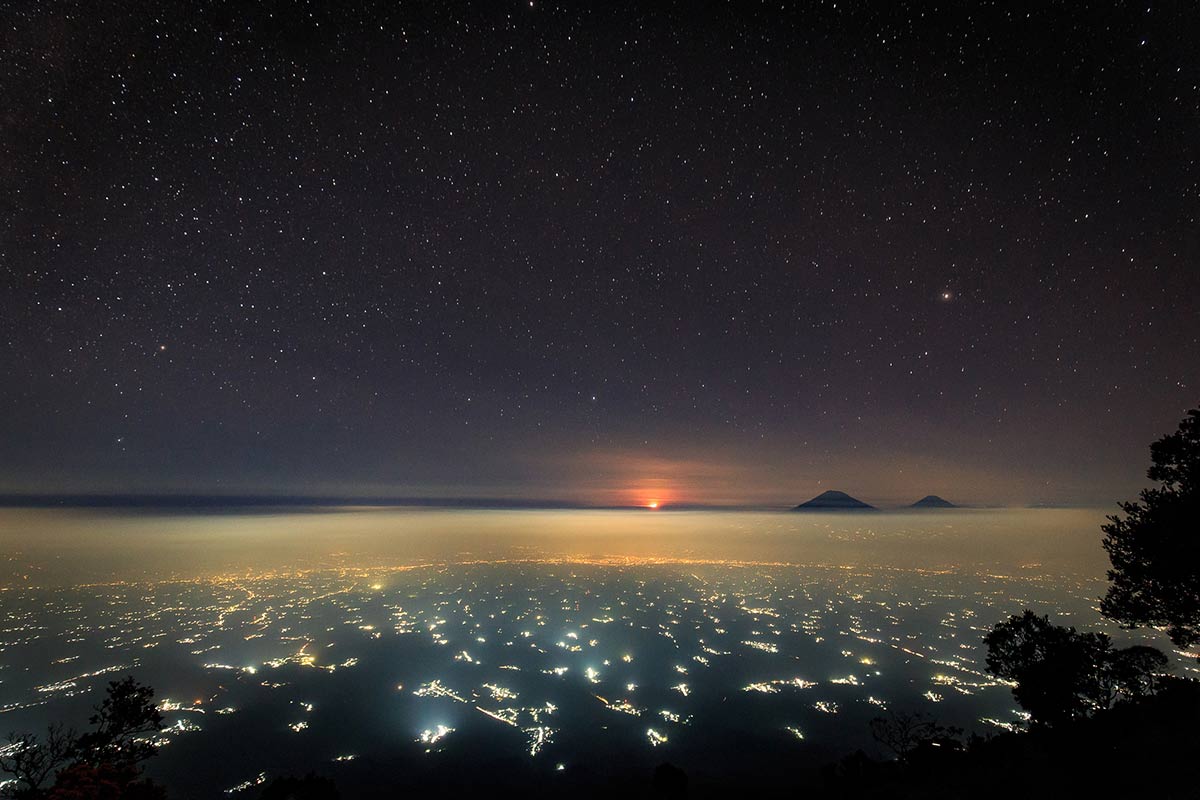Wahyu Widhi is a self-taught photographer who started experimenting with his father's analog camera. This became his hobby from 1996, and by 2007 he began to study photography using a Canon PowerShot G5 pocket camera. In 2009, he delved into DSLR cameras, documenting his journeys through the lens of his trusty Canon EOS 450D camera; he eventually switched to Canon EOS 6D Full-Frame camera in 2013, a gear that would help him focus in night photography.
Besides photography, Wahyu Widi also journals all his travels around the world. In the beginning, it was just an ordinary sketch that was uploaded to www.landscapeindonesia.com. This was a start of an e-book publication that followed.
In 2015, Wahyu published a book titled “Memotret Milky Way” (Capturing Milky Way), collaborating with Elex Media Computindo as publisher. He also published traveling photo books, such as SEMERU (2014) and MERBABU (2017). One of his dreams is to capture the beauty of 53 national parks in Indonesia. With each snap, he comes closer to achieving that dream.

EOS 6D; EF16-35mm f/4L IS USM; 16mm; f/16; 1/125 sec; ISO-200
What is your photography style?
I’m in love with nature since my childhood days, and it’s still my favorite today. I love to capture views of mountains, beaches, and the scenic countryside. It is also an empowering feeling to be at one with the beautiful vistas in Indonesia.
Do you have any tips on what equipment to bring for climbing or trekking? Any gear we should avoid?
That depends on the picture that you're going to capture. If you're shooting landscapes, wide and telephoto lens are enough. For capturing portraits, you might add fast lenses, such as EF35mm f/1.4L USM or EF50mm f/1.4 USM. For capturing in low speed and low light, you will need a tripod. Besides that, CPL and ND filter, spare battery, cable release, and cleaning equipment (blower and lens tissue) are all necessary. Always manage your equipment before your reach your destination. You’ll need to plan the location, time, and the type of pictures you would like to capture. Don’t bring unnecessary items, as they will become a cumbersome burden during the journey.

EOS 6D; EF16-35mm f/4L IS USM; 25mm; f/11; 1/45 sec; ISO-100
Find out more on using lens filter for landscape photography: Using Lens Filter: 2 Techniques from Professional Photographers
What are your most reliable equipments? What are some of your favorite must-have Canon gears?
Right now, I'm quite faithful to my EOS 6D. I also bring my EOS 450D and PowerShot G15 pocket cameras as spares. My lens of choice depends on my needs. I normally use Canon EF16-35mm f/4L IS USM and Canon EF70-200mm f/4L IS USM lenses. I trained with my PowerShot G5 pocket camera in the beginning and eventually shifted to EOS 450D as their features are not so different. I've moved on to Canon EOS 6D due to its low noise, which is good enough in high ISO. It’s helpful in low light conditions and in capturing milky way.

EOS 6D; EF16-35mm f/4L IS USM; 16mm; f/4; 3sec; ISO-6400
Find out more about Wahyu Widhi’s astro photography trip in Flores Indonesia: When Bajawa Coffee Accompany Our Astrophotography Search
Among all photography journeys, which one is your favorite or most memorable?
Actually, each journey has its own merits and it’s quite hard to choose which one is the most memorable. But, my last journey to Nepal in 2015 was remarkable. I spent up to 9 days travelling (ups and downs) to Annapurna Base camp (about 4130 meters above sea level), and it was raining most of the time. We were there during the wrong season, because our concern was only to find the cheapest tickets. We didn't pay attention to the weather conditions in Nepal.
Unfortunately, it was monsoon season with heavy showers from afternoon until midnight almost every day. Our plan to hunt the starry nights at Nepal totally failed, even though we were all packed for it. Two bodies of DSLR EOS 6D and EOS 450D, one pocket camera: Canon PowerShot S95, tripod with pano head to capture the 360 panorama in Nepal, also Canon EF16-35mm f/4L IS USM and EF70-200mm f/4L IS USM lenses.

EOS 6D; EF16-35mm f/4L IS USM; 16mm; f/11; 1/6 sec; ISO-200
But the pleasant surprise came on the 8th day, when we arrived at Annapurna Base Camp to a few hours of clear skies. But by 9am we had to climb down because it started to rain again. One day we will definitely go back to Nepal for more sceneries!
Can you tell us your process in writing this book? What was the motivation behind the book?
Actually, this Merbabu Photobook Project was my dream project. I did it all by myself, from taking pictures, to choosing them, laying it out, and writing the articles. But in the middle of putting it all together, my friends from Telusuri helped me spice up the articles and designers from Kreavi helped me with the layout. Thanks to them, we finished this book far before the planned deadline. The Merbabu Photobook can now be purchased online!

Since 2010, my friends and I from Landscape Indonesia have created photobooks inspired by Indonesia’s beautiful landscape. At that moment, the numbers of books about Indonesia are still limited. If there were any, they were usually written by foreign photographers. It became one of the reasons why we ended up traveling around Indonesia to capture the beauty of its nature and sharing them through website, social media, and books. Our BROMO book was created in PDF and shared through Landscape Indonesia.

EOS 6D; EF16-35mm f/4L IS USM; 16mm; f/4.5; 30sec; ISO-3200
Any tips on preparing for a climb? (for example: physical attributes, mental conditions, etc)
Physical training is as important as mental preparation. Though the nature is beautiful, nature is also cruel to those who are not well prepared. Besides preparing ourselves, don’t forget to pay attention to weather conditions or directly asking the base camp officer. Always remember that in our journey to the mountain, our main purpose is not to be at the top. It is to come back home safely.

EOS 6D; EF16-35mm f/4L IS USM; 16mm; f/11; 1/30 sec; ISO-50
Any message for photographers planning to follow the footsteps of ‘Wahyu Widhi’?
I don't feel comfortable as a role model yet. There are many other friends who would be a better fit as role models. I just do what I enjoy and pursue my own dreams. Everything can be learned if we are highly motivated. For taking pictures, there are moments when we feel that our results are not good compared to others. But, if we keep trying and re-evaluate the results, we will become better and more experienced. And when we look back, we will smile and realise that everything worth doing takes time.

EOS 450D; EF70-200mm f/4L IS USM; 70mm; f/9.5; 1/250 sec; ISO-200
Find out some other tips and tricks to start your adventure photography:
How to Choose the Right Lenses for My Photography
Lens FAQ #9: What is the difference between an f/2.8 and an f/4 telephoto zoom lens?
Receive the latest update on photography news, tips and tricks.
Be part of the SNAPSHOT Community.
Sign Up Now!About the Author
Landscape photographer, loves to take the beauty of Indonesian scenery. Loves to travel and capture the magic of mother earth.




































